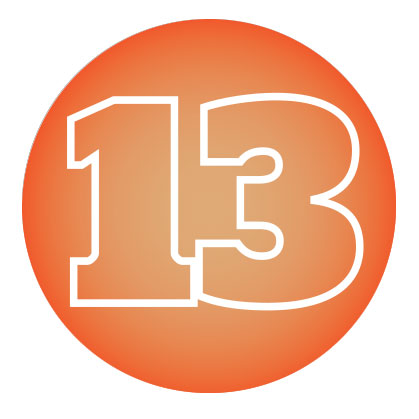Seeing Is Believing


Sometimes we don’t know what we’re missing.
For exactly one millennium, a dynamic, crucial phenomenon existed in Klal Yisrael: nevuah, prophecy. Many students of Tanach remember the story of Shaul, soon to be crowned king of Yisrael, approaching Shmuel Hanavi for help in locating his father’s lost donkeys. The prophets, however, offered much more than mundane information. Rav Samson Raphael Hirsch emphasizes that the primary role of the navi was not to reveal to us what we wanted to know; he was Hashem’s messenger to inform us of what Hashem wanted us to know.
Human Sanctuary
An enigmatic conversation in Tanna Dvei Eliyahu sheds light on the significant role that the neviim played in daily Jewish life. Although the last navi, Malachi, passed away over 2,000 years ago, the Midrash narrates a number of subsequent exceptional encounters with Eliyahu Hanavi. One such account records the words of an unidentified questioner who sought information from Eliyahu about Klal Yisrael’s prophets.
Rebbi, how many prophets delivered prophecies to Klal Yisrael?
There were 48 prophets in total.
Rebbi, why 48? Why not 45 or 50?
Because, my son, the number 48 corresponds to the 48 arei miklat, the designated cities of refuge.
Obviously, there’s more to Eliyahu’s observation than a seemingly random correlation of numbers. What is the equivalency between the cities of refuge in Eretz Yisrael and the Jewish prophets?
The commentary Tosfos ben Yechiel explains this Midrash. The purpose of an ir miklat was to provide a new residence for the individual who had committed accidental murder. The ir miklat actually served a dual function: it served both as refuge and confinement. The murderer found shelter in these cities from the victim’s family who sought to avenge their loved one’s death. At the same time, he was detained there as punishment for his crime, which, although unintentional, was caused by negligence or too casual an attitude toward human life.
How was the prophet’s role similar to that of a city of refuge? The navi also served as sanctuary — for sinners, penitents, and for the nation at large, who constantly required coaching and direction. They, as the hapless slayer, required a combination of nurturing and protection, as well as admonishment and atonement. By informing them of Hashem’s message, the navi helped them avoid sin and punishment. He used the power of prophecy to guide them in the very personal process of teshuvah, identifying their sins and the flawed attitudes that had led to their negligence.
The sixth principle of the Rambam’s Thirteen Articles of Faith states, I believe with complete faith that all the words of the prophets are authentic.
With this fundamental, the Rambam begins a new group of principles. The first five ikrim centered about our knowledge of Hashem: His existence and oneness, and the facts that He has no physical form and preceded all of existence. The second group, principles six through nine, pertain to the Torah. Once we believe in Hashem, the next step is to establish that He’s given us instructions for our lives. The starting point for this crucial conviction is belief in the phenomenon of prophecy, for had Hashem never communicated with man, we wouldn’t be cognizant of His Will.
The well-known story of Avraham Avinu’s search for truth illustrates this fact. He analyzed and examined the world and reached the inescapable conclusion that there must be a Creator. The Midrash elaborates: This can be compared to one who strolled from place to place and came upon a building engulfed in flames. He declared, “Is it possible that this edifice has no proprietor?” [i.e., it’s inconceivable that such a structure has been abandoned and left to burn down]. Indeed, once Avraham pronounced that the world must have a Creator, Hashem appeared to him and said, “I am the Owner of the world.”
As Rav Moshe Shapiro explains, man, using rational thought, is capable of recognizing the existence of a Creator. Yet, through intelligence alone, he cannot reach understanding of Who this Creator is, why He created the world, and what He demands from us. Hashem has communicated this fundamentally critical message to us through nevuah.
The Light Switch
In a sense, nevuah is the polar opposite of tefillah. In prayer, man initiates the conversation and speaks to his Creator; in the case of nevuah, it is Hashem who appears to the prophet and voices His Will. Despite their differences, these two states of mind have much in common: both nevuah and proper tefillah are characterized by man’s intense focus, dveikus, and a fusion of joy, love, and fear.
Indeed, the navi was deeply connected to Hashem, and it was this attachment that made him capable of prophecy. Nevuah demonstrates that Hashem does not “leave us in the dark” about His Will and His ways. Prophecy is described as the highest form of enlightenment man can perceive.
Rav Pincus compares prophetic vision to the experience of entering a dark room in the dead of night and suddenly finding the light switch. A moment before, the person was groping pathetically and had no bearings at all; abruptly, the illumination brought him into an entirely new reality. Similarly, nevuah bestowed unprecedented clarity to the visionary. He saw the entire cosmos laid out before him in stark relief. He saw Hashem’s presence everywhere, perceived Him with clarity and knowledge unattainable by human intellect, and understood the mysteries of Creation.
It is no wonder, then, that people sought the counsel of the navi for an exceptional form of personal guidance. He was able to answer the most difficult questions, including the existential dilemma of, “Why was I created? What does Hashem ask of me?” And his advice was always on the mark. The Vilna Gaon explains that by perceiving the shoresh haneshamah, the essence of the questioner’s soul, the navi was able to clarify his unique passageway through life and identify his particular mission in serving Hashem.
In fact, in earlier times, there was no need for doctors. The Ramban notes that if someone fell ill, he’d visit the navi, who would identify the source of his illness. The prophet would reveal to him the sin that required repentance; this put him on the road to recovery.
Yet, this is not all. The navi offered far more than personal direction for individuals. Even his ability to foretell the future was not the crux of his mission. To better appreciate the function of nevuah, we must begin at its source.
Bridge between Worlds
It was at Matan Torah that Klal Yisrael experienced the full potential of prophecy. They prepared meticulously for three days and then merited to hear the voice of Hashem, gaining firsthand knowledge that nevuah is authentic.
The Rambam tells us that nevuah had a profound effect on its receiver. When the Divine spirit descended on him, he was transformed, and was elevated above the stature of other wise men. He had no doubt whatsoever that he was hearing the voice of Hashem.
At the same time, however, he was overcome by a great fear, trembled violently, lost control of his physical faculties, and his soul would almost leave his body. Indeed, after listening to the first two Dibros, the nation was overwhelmed with fright. “If we continue to hear the voice of Hashem, we will die… you [Moshe] listen to all that Hashem says, and tell it to us; we will listen and obey.” With this plea, the Ramban comments, they accepted upon themselves the authority of Moshe and all other prophets in the future to serve as Hashem’s messengers.
Thus the navi’s task was to reconnect us to, or perpetuate, the experience of Matan Torah. He performed this in a multitude of ways. When he delivered messages from Hashem of admonishment, encouragement, and inspiration, he was living proof that Hashem communicates with man, desires our relationship, and that the Torah is His message. His very presence bridged the upper and lower worlds, and his dveikus was the starting point of Hashem’s manifestation among us. And, of course, when his predictions came true and his advice was proven reliable, it gave credence to the power and omniscience of Hashem.
Nevertheless, the spirit of prophecy was eliminated from Klal Yisrael during the Second Beis Hamikdash, at the same time that the desire for idol worship was removed. When we were unable to withstand the temptation of idolatry, the Sages prayed for its removal, and, to maintain the precise balance of kedushah and tumah — pure and impure forces — in the world, nevuah departed as well.
Finding the Voice Today
If nevuah is absent today, and the connection between the upper and lower worlds has been greatly diminished, whose words provide us with the protection and guidance we need? What force creates the vital attachment to our Creator and the linkage back to the Voice at Har Sinai? Where do we find sanctuary today?
The last navi provides the solution in his closing message. The final words of the prophets for all time — until the arrival of Mashiach — read, significantly: Zichru Toras Moshe avdi; Remember the Torah of My servant Moshe (Malachi 3:22). Torah study is the replacement for nevuah. How does it achieve this?
Rav Aharon Kotler notes that Matan Torah featured “a kol gadol v’lo yosof, a great voice that never ceased.” The question is obvious: If that voice still resonates, where do we hear it today? We hear it in the Torah itself. One who learns Torah will find guidance and hear the voice in the passages he studies. The Vilna Gaon demonstrated that all answers are revealed and all secrets of creation are embedded in the words of the written Torah. Thus, although we cannot compare this form of revelation to nevuah, which was direct and dramatic, Hashem’s word does remain accessible to us.
In a similar vein, the Gemara states that when nevuah was taken from the neviim, it was given to the chachamim. The Ramban explains this to mean that the wise ones of every generation know the truth by means of Divine inspiration. Of course, Divinely inspired knowledge, as great as it is, doesn’t compare to the otherworldly power of nevuah, yet it’s an echo of the voice we seek.
Lastly, the Vilna Gaon tells us that this is true even on a personal level. “The spirit of each person shall inform him (Yeshaya 40:13).” Hashem has given us our own inner sense of truth, if we sincerely tap into it.
Although the words of only a small number of prophets — 48, and an additional 7 prophetesses — were relevant enough to be recorded for posterity, over one million members of Klal Yisrael achieved nevuah during the prophetic era. These numbers tells us that nevuah, and the high level of dveikus it required, was eminently possible, and that Hashem encouraged this intimacy.
Yoel Hanavi (3:2) indicates that nevuah will return in the future: At that time I will cause My spirit to flow onto all flesh. At that time — may it be soon! — the voice of Hashem will reverberate again, directly, universally, and indisputably.
Sources include the teachings of Rav Shimshon Pincus, Rav Chaim Friedlander, Rabbi Zechariah Fendel, Rav Ezriel Tauber, Rav Dovid Cohen, and Rabbi Yitzchak Sender.
(Originally featured in Family First, Issue 481)
Oops! We could not locate your form.






